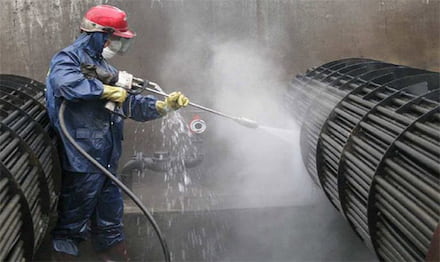Detailed Process of Hot Melt Marking Construction

1. Road Cleaning
Before construction, the nearby area must be cleaned to ensure that there are no impurities such as oil, water, fallen leaves, weeds, etc., so as not to affect the adhesion, smoothness, and reflective effect of the markings.
2. Full Scale Plotting
During the setting out process, calculations and measurements must be made strictly in accordance with the construction drawings. Measure the number of lanes that need to be marked on the road, fix the points, and then mark them with a slate pen. Use titanium dioxide or double flying powder to stick a hemp rope to stretch the line. After the rope is removed, make corrections and improve it to ensure that the line shape is clear and accurate.
3. Lower Coating Agent Application
The primer is a common adhesive used in hot-melt marking construction. Applying it on the highway pavement can make the hot-melt paint better adhere to the road surface.
4. Hot melt coating application construction
Before construction, first check the relevant coating equipment.
As the trolley moves forward, the paint will form a film on the road surface, and a layer of glass beads will be spread on the film during the coating process. When the trolley moves forward, use the reference waterline as the ruler to control the thickness and width of the markings to ensure the coordination, clarity, and smoothness of the markings at the connection between straight lines and curves.
Note: During the coating process, in order to avoid settling and separation of the paint, the paint needs to be stirred frequently.
5. Line modification and opening to traffic
After the paint application is completed, check and correct the marked line shape, check the spread of glass beads, etc. After confirmation, clean up the construction site.
After the markings are dry and hardened, the relevant construction equipment can be moved, safety facilities removed, and traffic opened.
The ultimate purpose of installing and maintaining road markings is to improve road safety; for this, high-quality raw traffic safety materials are essential.
As a leading manufacturer of traffic safety materials with more than 30 years’ experience, Tory is committed to ongoing product development and excellent customer services that makes us the perfect partner for your road marking paint supply needs. We can provide you with raw materials (such as reflective glass beads, MMA resin, AW element etc.) with very competitive prices which can be customized to meet the specific requirements of customers and projects. For more information, or to get started on your traffic safety solution: https://www.cntory.com/
Feel free to contact us:
Email: Echo@cntory.com
WhatsAPP: +8617355287086
LinkedIn:https://www.linkedin.com/company/anhui-tory-material-technology-inc/





